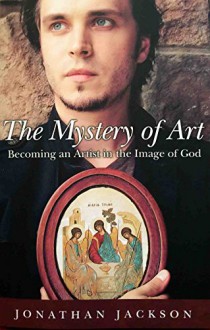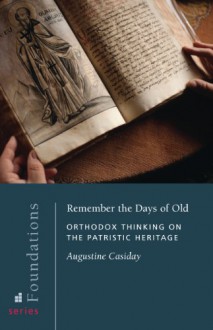
Die texanische Autorin Katherine Arden besitzt einen Abschluss in französischer und russischer Literatur. Als man sie fragte, warum sie diese akademische Laufbahn einschlug, antwortete sie, ihr größter Antrieb sei ihre Liebe zum Reisen gewesen. In der High-School verbrachte sie ein Jahr in Frankreich und lebte vor ihrem Studium ein weiteres Jahr in Moskau. Fremdsprachen und die Möglichkeit, in eine andere Kultur einzutauchen, faszinieren sie. Angesichts dieses Hintergrundes war es naheliegend, als Schauplatz ihres ersten Romans „The Bear and the Nightingale“, Auftakt der „Winternight Trilogy“, Russland im 14. Jahrhundert zu wählen. Ich erhielt das Buch als Rezensionsexemplar via Netgalley.
Vasja ist nicht wie ihre Geschwister, ihr Vater oder die Menschen in ihrem ländlichen Haushalt. Sie besitzt die seltene Gabe, die Hausgeister, die ihr Volk seit Jahrhunderten schützen, zu sehen. Sie wächst in dem Wissen auf, dass all die Legenden und Märchen, die am Feuer in dunklen, kalten Nächten erzählt werden, wahr sind. Die Jahre vergehen. Aus einem ungestümen, frechen Mädchen wird eine junge Frau wilder Schönheit, die ihre Freiheit ebenso liebt wie ihre Familie. Besorgt beobachtet Vasja den zunehmenden Einfluss der orthodoxen Kirche, die Angst schürt und den Glauben an die Wächter ihrer Heimat erstickt. Die Macht der Geister schwindet. Tief im Wald regt sich das Böse. Der Bär erwacht aus seinem Schlummer. Nur sein Bruder, der Winterkönig Morozko, kann ihn erneut in Schlaf versetzen und das Land vor seiner Niedertracht bewahren. Doch auch Morozko ist nicht mehr, wer er einst war. Er braucht die Hilfe einer wilden Maid, um seinem Bruder Einhalt zu gebieten. Eine Maid, mit Wind in ihren Haaren und Magie in ihrem Herzen – Vasja.
Ich liebe den aktuellen Trend der Urban Fantasy, zu ihren Wurzeln zurückzukehren und wieder richtige Märchen zu erzählen, statt die millionste Variante der Vampir- oder Werwolf-Romanze aufzukochen. Es ist großartig, weil es so viele Möglichkeiten eröffnet. „The Bear and the Nightingale“ ist ein Märchen. Es verbindet das Übernatürliche erfrischend natürlich mit der historischen Realität des Settings, indem es sich ausschließlich auf die russische Folklore und Mythologie stützt. Im 14. Jahrhundert war an das Russland, das wir heute kennen, noch nicht zu denken. Katherine Arden entführt ihre Leser_innen in eine Zeit, in der sich das Wort „Zar“ noch auf den byzantinischen Imperator in Konstantinopel bezog und orthodoxes Christentum und heidnische Gebräuche parallel existierten. Es war völlig normal, gleichermaßen vor Ikonen zu beten und die zahlreichen Hausgeister mit verschiedenen Gaben gütig zu stimmen. Ich wusste vor der Lektüre nicht, wie vielseitig, komplex und spezifisch die russische Folklore ist. Im vorchristlichen Glaubenssystem finden sich für jede Kleinigkeit schützende Entitäten, die fest mit dem Alltag der Menschen verbunden waren und ganz selbstverständlich geehrt wurden, besonders fernab der Städte. Die Kirche sah sich von diesem Brauchtum bedroht, ein Umstand, den Katherine Arden anhand der Schwierigkeiten, mit denen ihre magisch talentierte Protagonistin Vasja konfrontiert ist, subtil und überzeugend illustriert. Der christliche Anspruch auf ein religiöses Monopol stört das Gleichgewicht des Lebens auf dem Land, das die Autorin wunderbar atmosphärisch in all seinen der rauen Natur unterworfenen Facetten porträtiert. Sie öffnet die Tür für ein uraltes Übel. Vasja ist die einzige, die die Gefahr erkennt, vermag jedoch nicht zu intervenieren, weil sie als Hexe verschrien ist und ihr niemand Glauben schenkt. Als starke, unabhängige Frau eckt sie pausenlos an, da sie ihrer Zeit weit voraus ist und daher keinen Platz in einer Gesellschaft findet, die ihr lediglich die Wahl zwischen Ehe oder Konvent lässt. Männer fühlen sich von ihrer Wildheit angezogen, schätzen diese allerdings nicht als kostenbaren Zug ihrer Persönlichkeit, sondern als Herausforderung. Sie wollen Vasja dominieren, zähmen oder gar brechen. Die potentiellen Prinzen enttäuschen. Dadurch hat sie keine andere Option, als das Konzept der Märchenprinzessin hinter sich zu lassen und selbst zur Heldin zu werden, die sich übernatürlichen Mächten mutig entgegenstellt, um ihre Heimat zu retten. Die Finesse, mit der Katherine Arden die Heldenrolle ihres Romans an die Vorlage russischer Märchen – in denen weibliche Heldinnen keine Seltenheit sind – für ein westliches Publikum verdaulich anpasst, ist beeindruckend und lässt nicht erkennen, dass es sich um einen Erstling handelt. Wäre ihr Schreibstil noch ein wenig blumiger und greifbarer, hätte ich mich sogar zu einer 5-Sterne-Bewertung hinreißen lassen. Zwar harmonisiert die schnörkellose Schlichtheit ihrer Beschreibungen mit der Charakterisierung ihrer Protagonistin, doch da sie in „The Bear and the Nightingale“ auf eine actiongetriebene Handlung verzichtet und stattdessen ein ruhiges, gelassenes Tempo verfolgt, hätte mir ein Müh mehr Üppigkeit durchaus zugesagt. In einem Märchen darf es eben gern ein bisschen mehr sein.
„The Bear and the Nightingale“ bereitete mir unheimlich viel Freude. Bezaubert von der speziellen Aura des Buches, die bewusst an ein russisches Märchen erinnert, flog ich durch die Seiten und wollte mich gar nicht mehr von Vasja trennen. Ich versank in dieser Welt eisiger Winde, tiefen Schnees, geheimnisvoller Wälder und uralter Magie und merkte gar nicht, wie viel mir Katherine Arden beiläufig über die russische Kultur beibrachte. Ich habe das Gefühl, die berühmte „russische Seele“ jetzt wesentlich besser zu verstehen, weil ich ihre Wurzeln besuchen durfte.
Es war die richtige Entscheidung, an „The Bear and the Nightingale“ zu glauben. Ich bereue nicht, auch die Fortsetzung „The Girl in the Tower“ bei Netgalley angefragt zu haben und freue mich jetzt, direkt weiterlesen zu können. Welche Abenteuer Vasja auch immer erwarten mögen – ich bin an ihrer Seite.
Vielen Dank an den Verlag Ebury Publishing und Netgalley für die Bereitstellung dieses Rezensionsexemplars im Austausch für eine ehrliche Rezension!

 Log in with Facebook
Log in with Facebook 










